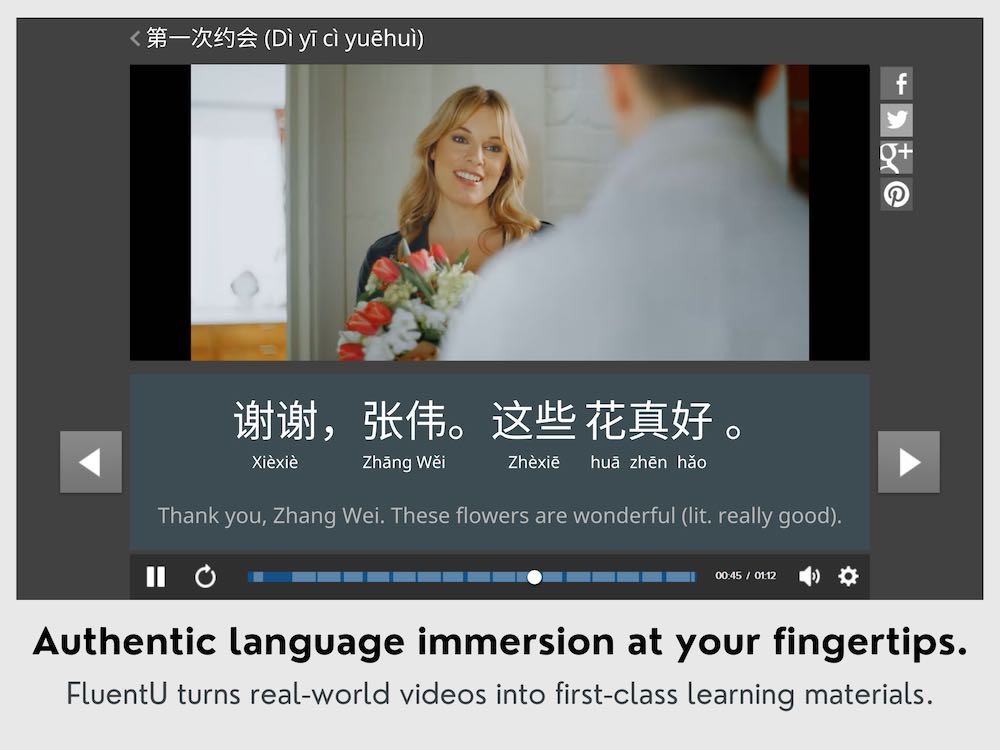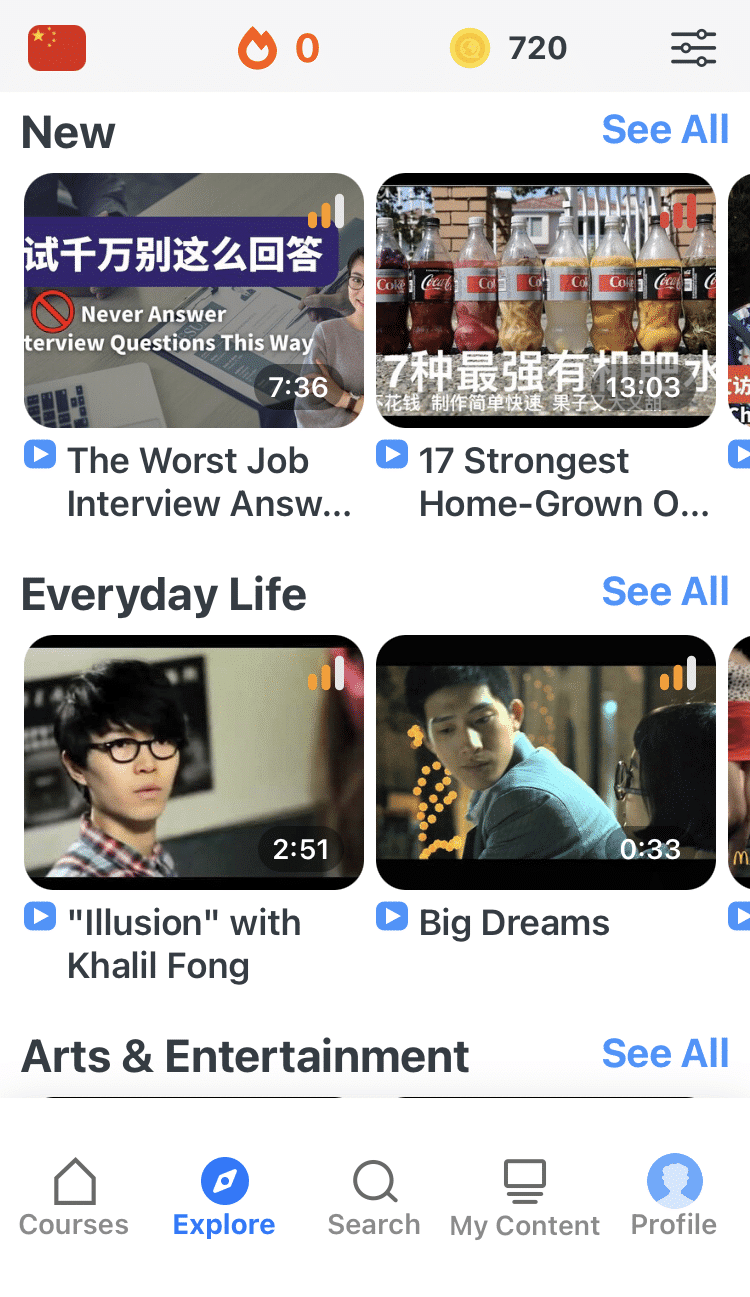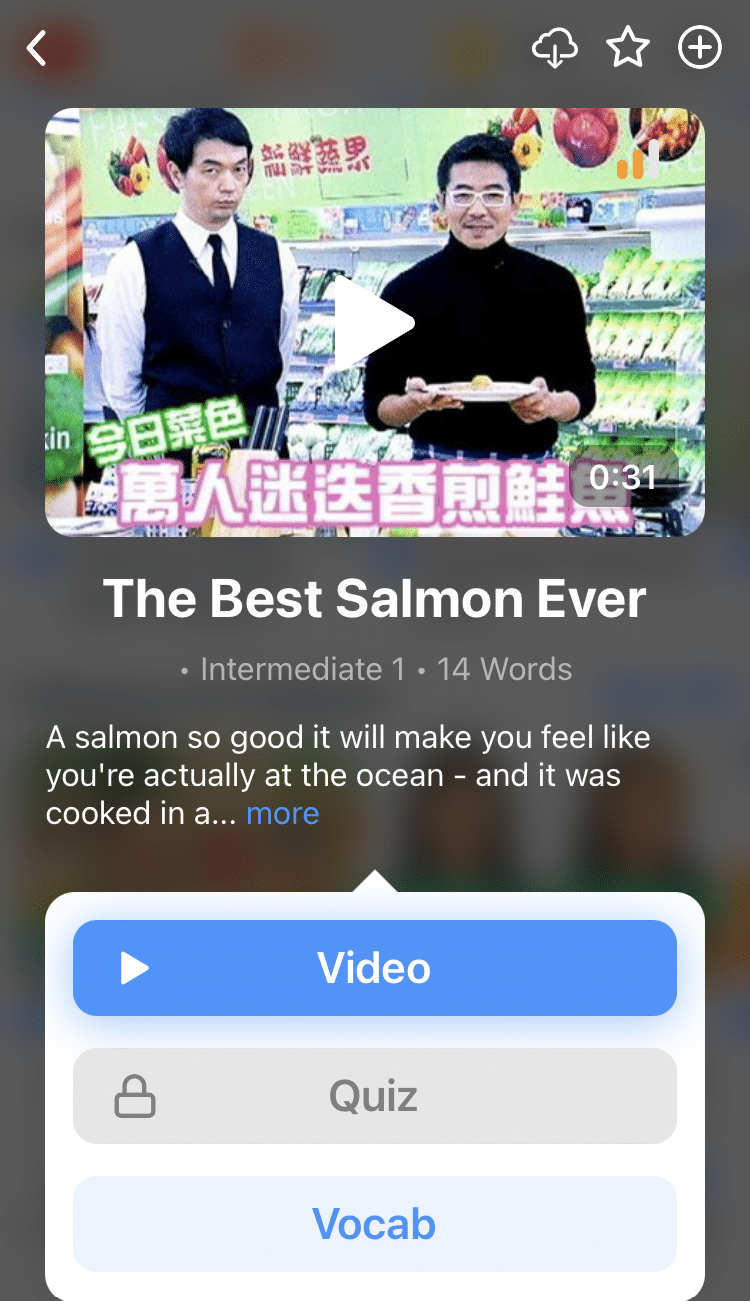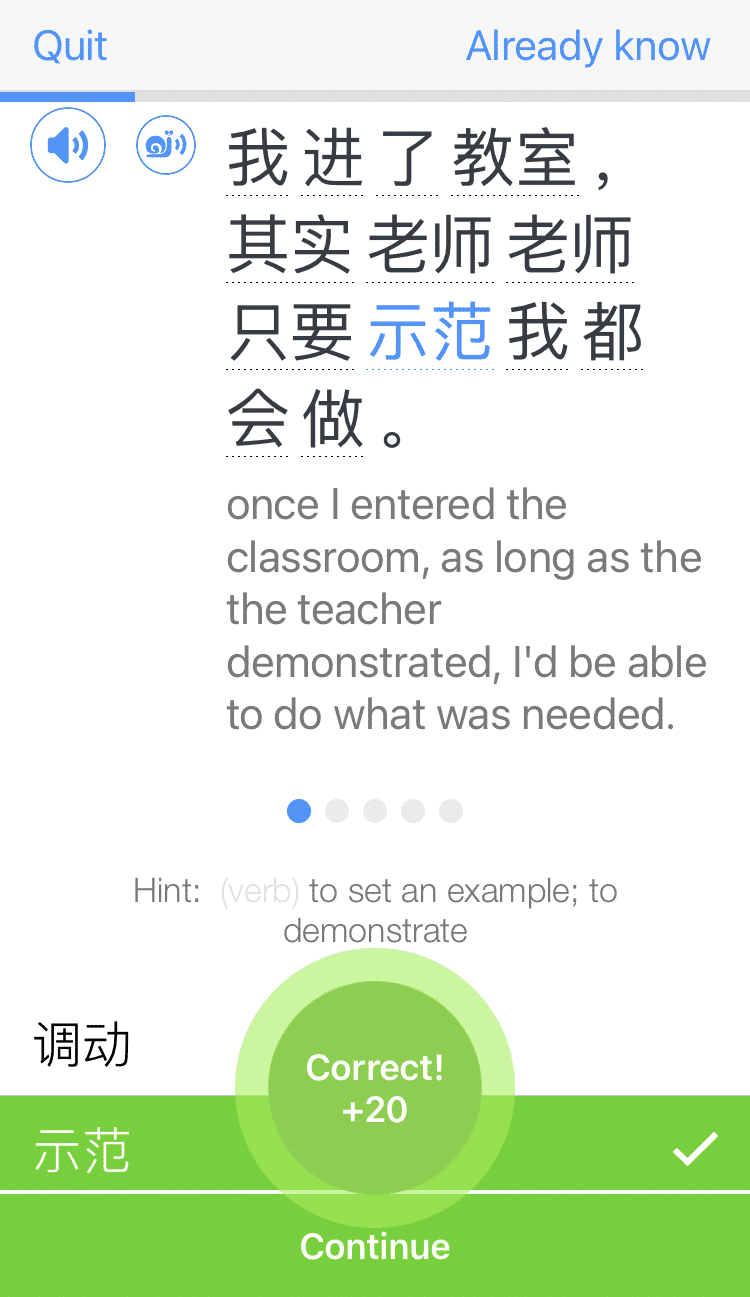是 (shì) in Chinese: How to Correctly Use the “To Be” Verb
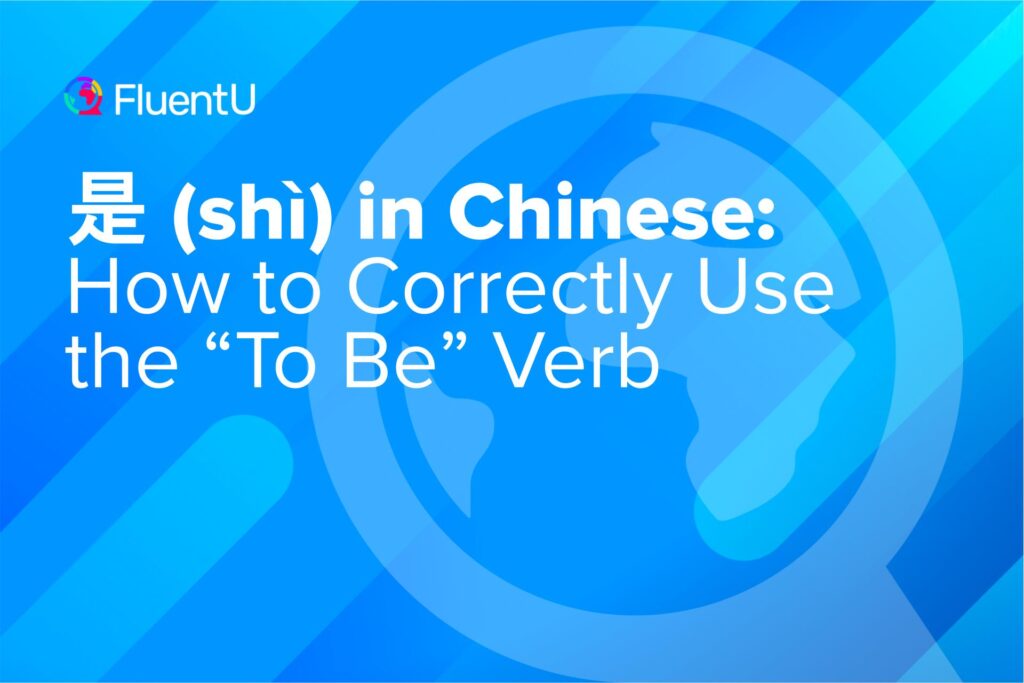
是 is used to say “to be” in Chinese, but it can cause some confusion as it is used very differently from how the verb is used in English. The truth is that 是 is only one of the few ways to convey “to be”, so it’s important that we go over the correct usage of the word.
This post will take you through how 是 works so that you will be able to tell that difference and use it properly in your own speech.
Download: This blog post is available as a convenient and portable PDF that you can take anywhere. Click here to get a copy. (Download)
5 Ways Use 是 in Chinese
To connect two nouns
是 is used like the English verb “to be” when you want to connect two nouns (or pronouns, or a mix) in a sentence to explain what something or someone is:
我是美国人。
(wǒ shì měi guó rén.)
I am an American.
我是一个老师。
(wǒ shì yí gè lǎo shī.)
I am a teacher.
这是手机。
(zhè shì shǒu jī.)
This is a cell phone.
苹果是一种水果。
(píng guǒ shì yī zhǒng shuǐ guǒ.)
Apples are a kind of fruit.
To ask a question
The phrase 是不是 (shì bú shì) is one way of asking a question in Chinese. If you want to make a question out of a sentence that has 是 as its verb, you can do it by substituting 是 with 是不是, literally meaning “be not be.”
这是不是手机?
(zhè shì bú shì shǒu jī?)
Is this a cell phone?
那是不是沙发?
(nà shì bú shì shā fā?)
Is that a sofa?
苹果是不是一种水果?
(píng guǒ shì bú shì yī zhǒng shuǐ guǒ?)
Are apples a kind of fruit?
To confirm information
The phrase 是不是 can also be added to the end of a sentence to confirm something you think is true.
You can confirm any type of information this way; it isn’t limited to sentences that already contain 是 as their main verb:
你是台湾人,是不是?
(nǐ shì Táiwān rén, shì bú shì?)
You’re Taiwanese, aren’t you?
你在吃饭,是不是?
(nǐ zài chī fàn, shì bú shì?)
You’re eating, aren’t you?
The correct way to answer any of these questions is either 是 if the answer is “yes,” or 不是 (bú shì) if the answer is “no.”
To keep a conversation going
If you’re tired of trying to string together Chinese sentences and want to keep the other person talking, throw in a 是吗? (shì ma?). It’s the Chinese equivalent of something like “Oh, really?” or “Yeah?”
As long as you don’t make yourself sound exceedingly skeptical, the other person will take it as a sign that you’re interested in what they’re saying and keep on going.
To agree in conversation
Another good way to show you’re following a conversation is to occasionally agree with the person you’re listening to. To do that, try using these phrases:
- 是的 (shì de) is for mild agreement. It’s the equivalent of “uh-huh” or “yeah.” This mostly serves to show the speaker that you’re listening, you’re empathizing with them or you want to hear more.
- 是啊 (shì a) is a bit stronger. Now you’re not just being polite—you agree with what you’re hearing and you feel a bit excited about it. If you want to make sure the speaker knows how you feel, you can interject a 是啊 (shì a) during a pause. This is like saying “Right!”
- 就是 (jiù shì) is the most emphatic of the three. There’s no doubt in your mind that the speaker is correct and you want to express your firm agreement. Think about the English phrases “Of course!” or “I know!”
When Not to Use 是
By now it should be clear that the verb 是 is really common in Chinese. But it still isn’t nearly as common as the verb “to be” is in English. There are at least four common ways in which English speakers use “be” that 是 just can’t be used in Chinese.
To connect a noun and an adjective: Use 很 (hěn) instead
In English, we say “The child is tall” or “The toy is soft.” Chinese people do not say “孩子是高” (hái zi shì gāo) or “玩具是软” (wán jù shì ruǎn) to communicate these ideas. Instead, use 很 meaning “very.”
Chinese sentences of this sort don’t require a verb. Instead, they typically include an intensifying adverb such as 很 between the subject and the adjective.
孩子很高。
(hái zi hěn gāo.)
The child is tall.
玩具很软。
(wán jù hěn ruǎn.)
The toy is soft.
Exceptions:
There are cases in which 是 is followed by an adjective, but it doesn’t equate to what it would be in English. This can happen with the 是……的 (shì…de) construction to emphasize whatever word ends up in between shì and de:
树叶是绿色的。
(shū yè shì lǜsè de.)
The leaves are green.
A second place you’ll hear 是 followed by an adjective is when 是 is actually part of the word, like 老是 (lǎoshì) or 总是 (zǒngshì), both of which mean “always.”
她总是很高兴。
(tā zǒng shì hěn gāo xìng.)
She is always happy.
To connect a noun and a prepositional phrase: Use 在 (zài) instead
In English, we say, “My friend is in the library” or “The cat is on the table.” In Chinese, we use 在.
在 is a preposition meaning “at”—but in sentences like these, it takes the same place that the verb “to be” does in the English ones.
The formula for this is Subject + 在 (zài) + Location [+ Preposition]
我的朋友在图书馆。
(wǒ de péng yǒu zài tú shū guǎn.)
My friend is at the library.
我的朋友在图书馆里。
(wǒ de péng yǒu zài tú shū guǎn lǐ.)
My friend is in the library.
猫在桌子上。
(māo zài zhuō zi shàng.)
The cat is on the table.
To say “there is/are”: Use 有 (yǒu) instead
In English, we use “to be” when talking about the existence or presence of an object: “There’s a cat on the table,” “there are ants in the kitchen,” etc. In Chinese? Not so much.
Instead, use 有 meaning “to have.” This goes at the beginning of the sentence and no subject is necessary. After that, you just follow the same word order we just learned for location sentences.
[fluentu-tts engine="neural" voice="Zhiyu"]有猫在桌子上。
(yǒu māo zài zhuō zi shàng.)
There’s a cat on the table.
有蚂蚁在厨房里。
(yǒu mǎyǐ zài chú fáng lǐ.)
There are ants in the kitchen.
As a helping verb: Use 在 (zài) instead
Finally, English speakers use the verb “be” as part of the present or past continuous verb tenses: “I am eating an apple,” “He is running.”
In this situation, Chinese speakers use 在 to emphasize the continuous nature of the event they’re talking about.
This takes the same position in the sentence that “be” does in English. So in Chinese, you’ve got Subject + 在 + Verb [+ Object].
我在吃苹果。
(wǒ zài chī píng guǒ.)
I am eating an apple.
他在跑步。
(tā zài pǎo bù.)
He is running.
The more you see this versatile verb in use, the better you’ll understand when to use it (and when not to). Immersive programs like FluentU’s video-based learning app are a great option for studying words in context, so load up your favorite and get learning.
FluentU takes authentic videos—like music videos, movie trailers, news and inspiring talks—and turns them into personalized language learning lessons.
You can try FluentU for free for 2 weeks. Check out the website or download the iOS app or Android app.
P.S. Click here to take advantage of our current sale! (Expires at the end of this month.)
Now that you know when to use 是 and when not to, you’ll be one step closer to speaking more clearly in Chinese!
Download: This blog post is available as a convenient and portable PDF that you can take anywhere. Click here to get a copy. (Download)
And One More Thing...
If you want to continue learning Chinese with interactive and authentic Chinese content, then you'll love FluentU.
FluentU naturally eases you into learning Chinese language. Native Chinese content comes within reach, and you'll learn Chinese as it's spoken in real life.
FluentU has a wide range of contemporary videos—like dramas, TV shows, commercials and music videos.
FluentU brings these native Chinese videos within reach via interactive captions. You can tap on any word to instantly look it up. All words have carefully written definitions and examples that will help you understand how a word is used. Tap to add words you'd like to review to a vocab list.
FluentU's Learn Mode turns every video into a language learning lesson. You can always swipe left or right to see more examples for the word you're learning.
The best part is that FluentU always keeps track of your vocabulary. It customizes quizzes to focus on areas that need attention and reminds you when it’s time to review what you’ve learned. You have a 100% personalized experience.
Start using the FluentU website on your computer or tablet or, better yet, download the FluentU app from the iTunes or Google Play store. Click here to take advantage of our current sale! (Expires at the end of this month.)
